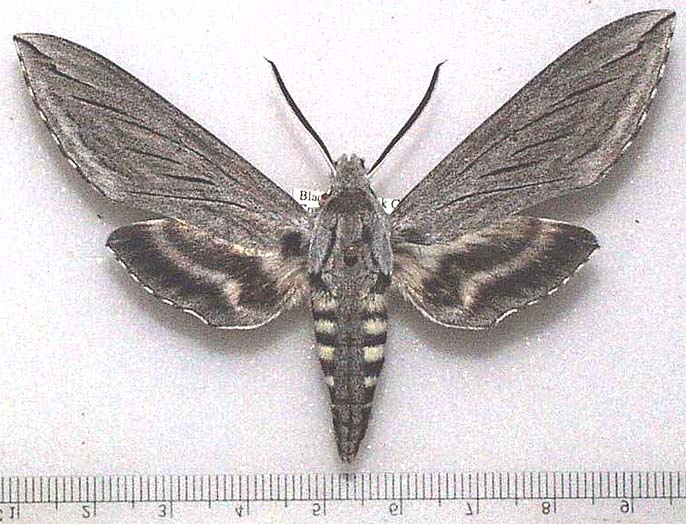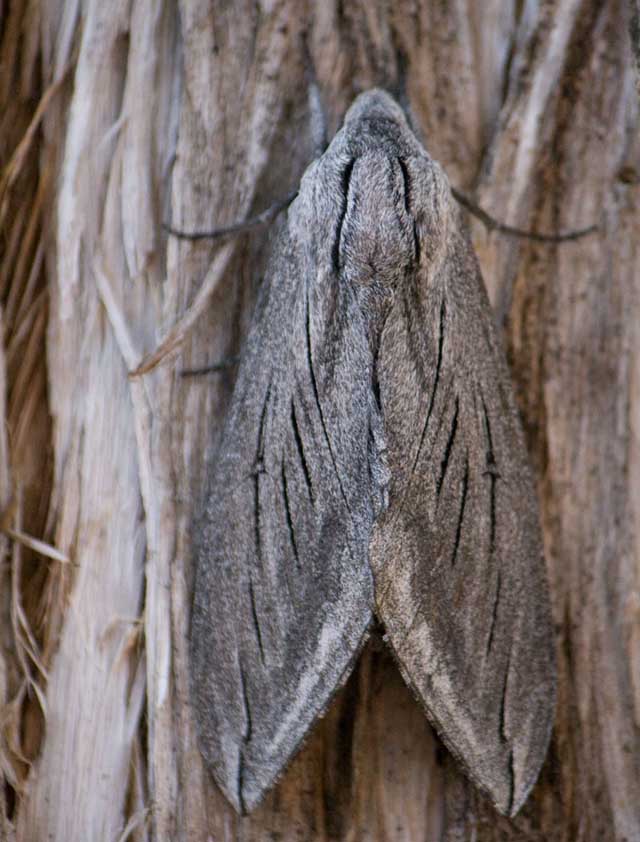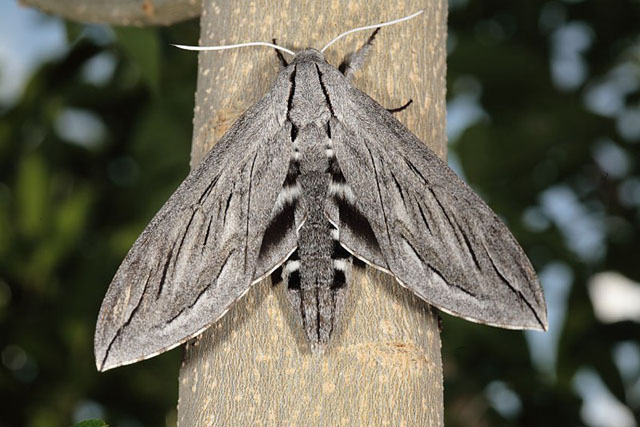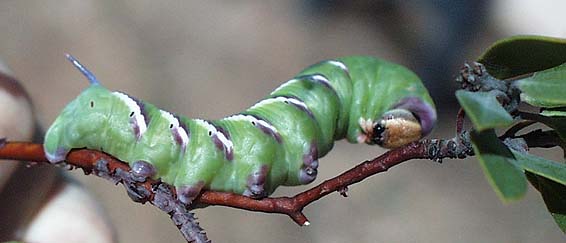|
|
Updated as per James P. Tuttle's The Hawk Moths of North America, September 1, 2008
|
Sphinx asellus
Sphinx asellus
(Rothschild & Jordan, 1903)
Hyloicus perelegans f. asellus

Sphinx asellus
courtesy of Bruce Walsh.
This site has been created by
Bill Oehlke at oehlkew@islandtelecom.com
Comments, suggestions and/or additional information are welcomed by Bill.
TAXONOMY:
Family: Sphingidae, Latreille, 1802
Subfamily: Sphinginae, Latreille, 1802
Tribe: Sphingini, Latreille, 1802
Genus: Sphinx Linnaeus, 1758 ...........
Species: asellus (Rothschild & Jordan, 1903)
|
MIDI MUSIC
.....It's a Wonderful World.....
copyright C. Odenkirk
ON.OFF
<bgsound src="world.mid" LOOP=FOREVER>
|
DISTRIBUTION:
The Asella Sphinx Moth, Sphinx asellus
(Wing span: 3 1/4 - 3 7/8 inches (8 - 9.9 cm)),
flies in pinyon-juniper woodland and similar arid situations in
Colorado (specimen type locality),
Nevada,
Utah, extreme southwestern
Wyoming,
Arizona,
New Mexico and southwestern
Texas.
It tends to be seen at elevations from 4000-6000 feet.

Sphinx asellus, resting on juniper, Payson, Gila County, Arizona,
July 24, 2009, courtesy of Lauren Paterson, tentative id by Bill Oehlke.
I have chosen asellus over chersis for the specimen depicted above, primarily because of the fine second
pair of dark streaks on the thorax. I could be wrong!
The upperside of the forewing is pale silver-gray with a series of
black dashes, a white patch at the tip, and a white stripe along the
outer margin. The upperside of the hindwing is black with blurry
white bands.
Sphinx asellus is very similar to Sphinx chersis, but
asellus is smaller, paler, and has more white above the dark streaks of
the forewing apex.
Jim Tuttle writes, "Sphinx chersis has a pair of single and
very fine black lines running longitudinally along the thorax;
whereas Sphinx asellus (Kitching & Cadiou changed it from
asella) almost always has two sets of black lines - the inner
lines tend to be bolder than in chersis - the outer (away from the
center of the thorax and toward the wings) being very faint."
It is often very difficult to tell the two species apart as adult
moths. The larvae, however, are quite distinct.
It is even very difficult for the leading experts to tell the two species
apart when only pictures are available that do not show the hindwings or ventral surfaces. Jean Haxaire indicates the following Sphingidae is Sphinx chersis
while Jim Tuttle says he would "GUESS" the image to be
Sphinx asellus, based upon the
boldness of the black lines, and even though the secondary lines are
not visible in the picture.

Sphinx chersis/asellus (closer to chersis), Arizona,
courtesy of Adam Fleishman.
FLIGHT TIMES:
Sphinx asellus adults probably fly
as a single brood from from May-July.
ECLOSION:
Pupae probably wiggle to surface from
subterranean chambers just prior to eclosion.
SCENTING AND MATING:
Females call in the males with a
pheromone released from a gland at the tip of the abdomen. Adults
nectar at a variety of flowers.
EGGS, LARVAE, PUPAE:
Larval hosts are Manzanita
and Arctostaphylos of the Ericaceae family.

Sphinx asellus fifth instar, courtesy of Bruce Walsh.
Return to Sphingidae Index
Return to Sphingini Tribe
Enjoy some of nature's wonderments, giant silk moth cocoons.
These cocoons are for sale winter and fall. Beautiful Saturniidae moths will emerge the following spring and summer.
Read Actias luna rearing article.
Additional online help available.
Eggs of many North American species are offered during the spring and summer. Occasionally
summer Actias luna and summer Antheraea polyphemus cocoons are available. Shipping to US destinations is done
from with in the US.
Use your browser "Back" button to return to the previous page.
This page is brought to you by
Bill Oehlke and the
WLSS. Pages are on space rented from Bizland. If you would like
to become a "Patron of the Sphingidae Site", contact Bill.
Please send sightings/images to Bill. I will do my best to respond to
requests for identification help.
 | 
Show appreciation for this site by clicking on flashing butterfly to the left.
The link will take you to a page with links to many insect sites. |





